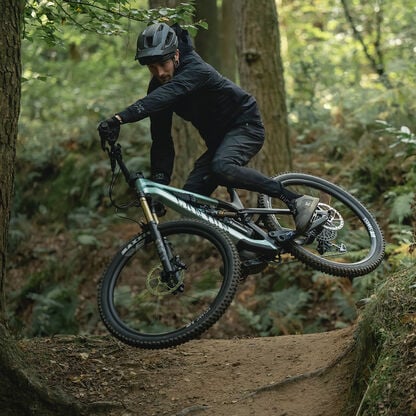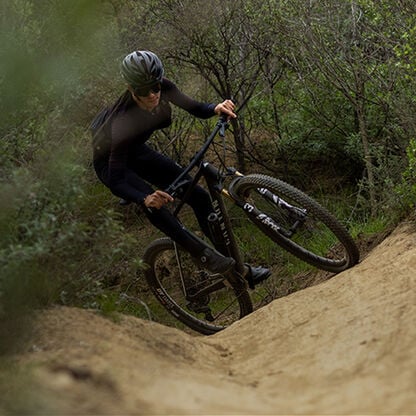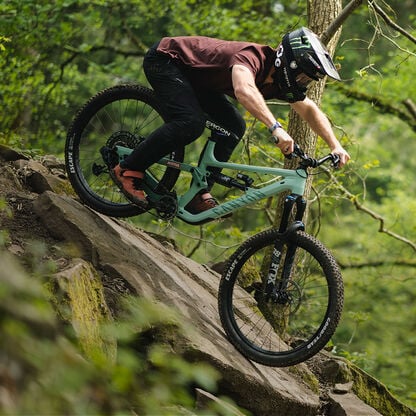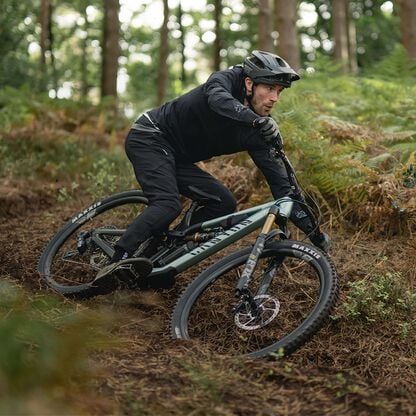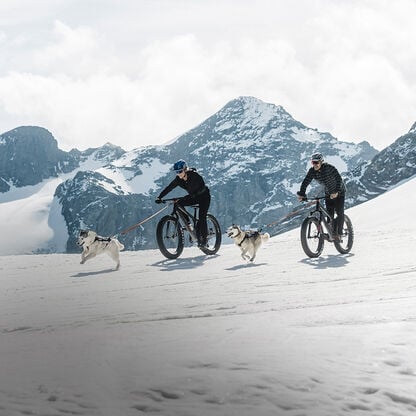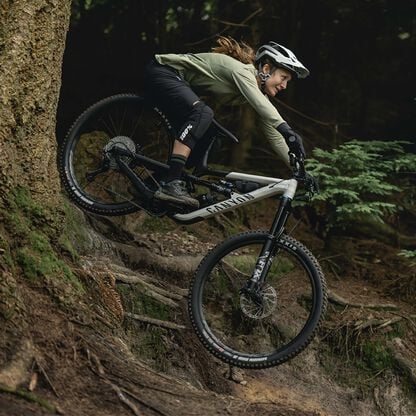Spectral or Neuron: Which is better for you?
The Spectral and the Neuron are both trail bikes that look quite similar at first glance, but they are designed for very different riders and missions. This short guide will hopefully help you decide which one is right for you.


“Comfortable and forgiving.” Those are the words that two-time DH World Champion Fabien Barel uses to describe the ride of the Neuron. In contrast, the Spectral is “an aggressive play bike for an experienced rider.” While both the Neuron and the Spectral are trail bikes, bikes for riders who want to do a bit of everything, they take very different approaches to doing it. Adventurer, Vedangi Kulkarni, explains that, “if there was something challenging on the trail where I was worried if it would land all right, I would go for a Spectral. But if there was a trail riding adventure then I would go for a Neuron.”
Contents
Playing vs exploring: Finding the right geometry
When buying a new mountain bike, getting the right geometry should always be the most important factor. You can custom tune suspension and change components to change the attitude of a bike, but the geometry is fixed so you will have to live with it for as long as you keep the bike.
If you are wondering which MTB size and geometry to go for, read more in our article on how to size an MTB.
Designed for advanced riders, the Spectral is built around a short, 40mm stem and has a long reach to help keep the bike stable at high speed. With less confident riders in mind, the Neuron has a 20mm shorter reach and 50mm stems across all sizes. Counting the combined length of the stem and the reach, the Neuron has a 10mm shorter cockpit to make it more comfortable and easier to handle than the Spectral.
Combining the 66-degree headangle with the 50mm stem on the Neuron helps balance the steering feel and makes it feel more neutral. The 64-degree angle and shorter stem on the Spectral are there to help keep the bike steady when things get wild, which can make the steering feel heavier and difficult at low speeds. Overall, thanks to the shorter reach, the Neuron also has a smaller wheelbase than the Spectral, which again makes the bike easier to handle at lower speeds.
Both bikes share many common points from Canyon’s mountain bike geometry philosophy. They have low bottom bracket heights to keep them stable, giving the rider the feeling of being in the bike, rather than on top of it. Seattubes are short to allow long dropper seatposts, seatposts angles are moderately steep for a well-rounded pedalling position and the stack heights are similar, because a higher front end makes for a confidence-inspiring riding position.

Suspension and Travel: Right Setup for Your Ride
The most obvious difference in the suspension between these two bikes is how much of it they have. To take on more challenging trails, the carbon fibre Spectral has a 150mm fork and 140mm rear travel, while the easier-going Neuron has a 140mm fork and 130mm rear travel. Yet the biggest difference between them can only be felt out on the trail.
These differences go way deeper than how much travel they have, each bike has a very different character on the trail thanks to its kinematic - how the suspension defines a bike’s personality. “The Spectral is a bike that will be excellent to pop, carry good speed, and generate speed to jump and play on the trails,” explains Fabien. Vedangi agrees with his assessment, “Say there was a particular feature that I was nervous about, like a rock drop that we've got on our local trails, with the Spectral I knew I would land alright. I don't worry about how the bike will handle it. My Spectral is the bike I ride when I want to progress.”
“How I see it,” continues Vedangi, “is that for someone coming into mountain biking, the Neuron is perfect. You really do get the feel for what a full suspension bike should feel like and what you can do with it, it is super comfortable.” This was the goal in designing the Neuron explains Barel, “it is designed towards the average user. You will find a fairly linear compression ratio within the kinematic that allows the bike to be very forgiving, to absorb the bumps and follow the terrain as well as possible, but if for example you take a big G out, or a jump, there is a good chance you'll bottom out.”
Frame Material Matters: Breaking Down the Options
Both of these bikes are available in lightweight carbon fibre models and more affordable but slightly heavier aluminium mountain bike versions. Designed for challenging trails and aggressive riding, the Spectral has an ASTM category four rating. This means it is strong enough for jumping moderate-sized jumps and all types trail riding, maybe even the odd lap in the bikepark. For more all-round riding and touring, the Neuron has an ASTM category three rating. This means it is not the right bike if you will be regularly riding jump lines, but because it is designed for easier riding the frame needs less reinforcement so it is a bit lighter than the Spectral. This lighter weight makes the bike a better partner for longer rides and bigger climbs.
Simplicity is the name of the game for the Neuron, it is a relatively straight forwards bike for riders who just want to get out and ride. To help make it the easiest possible bike to ride, the smaller sizes come with 27.5-inch wheels, rather than the 29-inch wheels on the larger sizes. Advanced riders often look for more from their rides, so the carbon fibre version of the Spectral is packed full of technology. It features the innovative K.I.S. system, to keep the steering more stable to help you get maximum fun from the trail. There is downtube storage in the frame, so you can carry some spares, tools or food with you to help you stay out longer. It also includes a flip chip so you can raise the bottom bracket by 8mm and steepen the head angle by 0.5 degrees, for riders who are looking for a more neutral trail bike. Although the aluminium versions of the bike do not share these same features, because carbon fibre allows for more complex construction to house them.

Evaluating build kits
Aiming at different riders and riding experiences means that the Spectral and the Neuron have quite different specs. While both share long-travel dropper seatposts and wide-range 12-speed drivetrains, the similarities end there. Most obvious is the suspension. For maximum performance, all Spectral models have burly forks and piggyback-equipped shocks, while the Neuron uses lighter, smaller stature forks and in-line shocks to help keep the weight down. Wheels and tyres are a similar story, with the Neuron being specced with slightly lighter wheelsets and lighter casing tyres with less aggressive tread patterns. This favours riders who are looking to climb further or who find a light bike easier to live with. Paired with the longer stem, the Neuron also has a slightly narrower handlebar to create a more accessible cockpit.
Neuron or Spectral? How to make the right choice
Vedangi is the kind of rider who keeps both the Spectral and the Neuron in her shed. She breaks down her decision saying, “as I'm road-y, gravel, long distance bikepacking sort of person coming into mountain biking, riding a Neuron felt like a first step in the right direction, it was a great first full suspension bike or for someone who just wants and easy ride. But then I also feel like I outgrew the Neuron. There was a point where there were certain trail features that, sure, I could do on my Neuron, but a Spectral is the better bike. Since I started riding my Spectral I’ve seen a lot of progression on technical features, but also an increase in confidence in so many ways since I got it. That said, if I was going on a trail riding adventure, or doing bikepacking, then I would still go for a Neuron instead of a Spectral.”
If you are still not sure whether the Spectral or Neuron would suit you better, you can use our bike comparison tool to compare them side-by-side.
Of course, nothing can beat getting out on the trail and testing one of these bikes. We are running our CLLCTV sessions around the world, and our demo fleet is the heart of these events if you want to test one of these bikes.

Discover our Mountain Bikes
Did this article help?
Thank you for your feedback
-
 About the author
About the authorMatt Wragg
Get to know Matt Wragg, the freelance photographer, writer, and self-proclaimed bicycle-breaker based in Nice, France. Despite unsuccessful attempts at XC, trials, 4X, and DH racing, Matt's passion for mountain biking never waned. After a stint in communications consulting, he decided to pursue his love for cycling and moved to New Zealand. Since then, he has traveled the world, chasing trails and building a successful career as a cycling photographer and writer. In 2021, he was diagnosed as autistic and has been coming to terms with it. His bike cellar is a true testament to his love for cycling, housing bikes that range from freeride to cargo.


